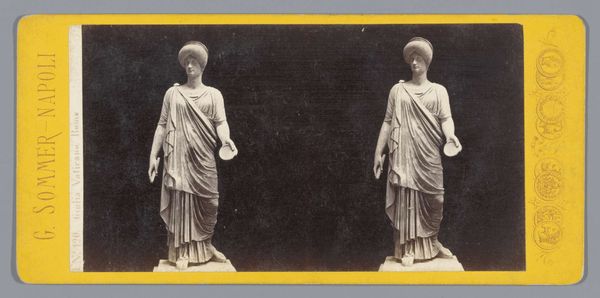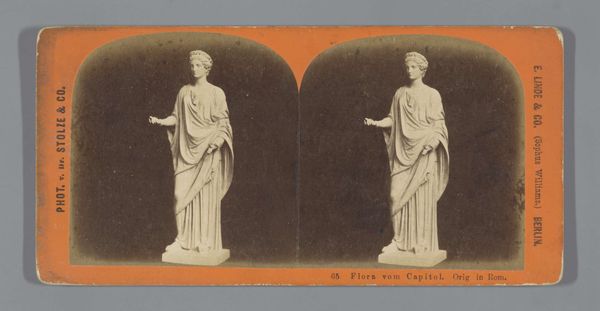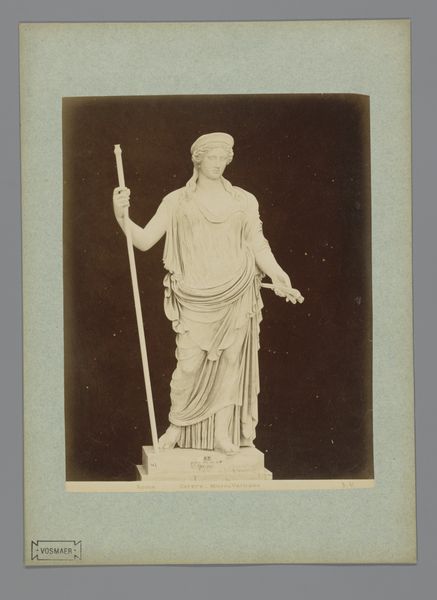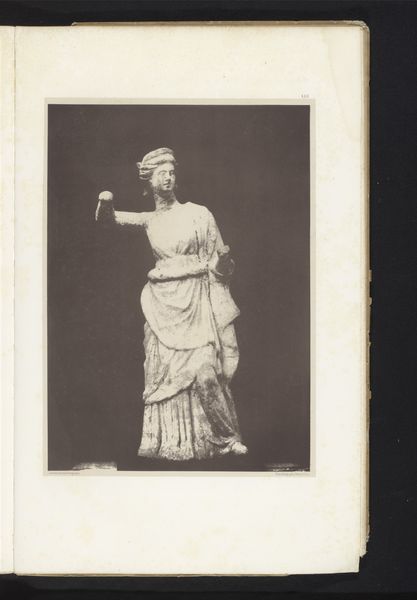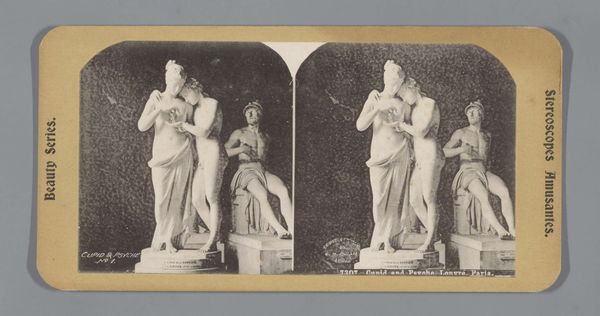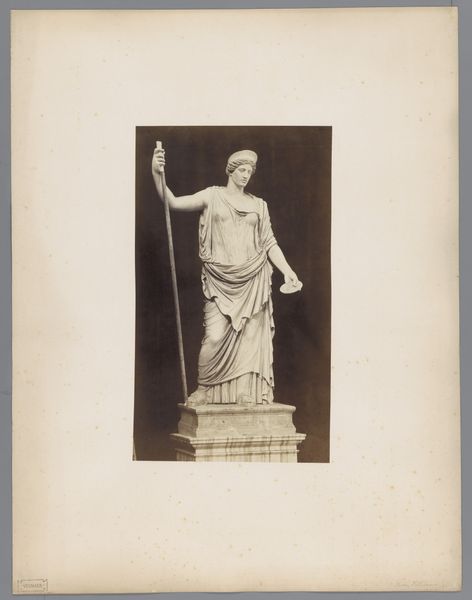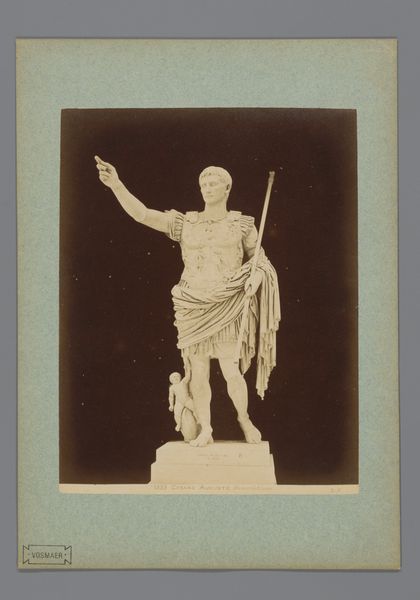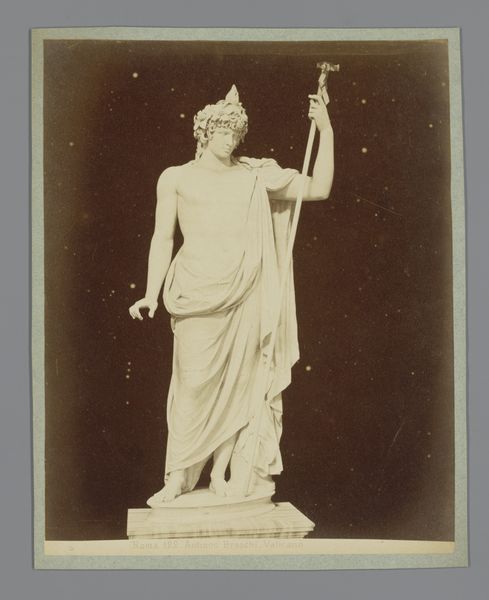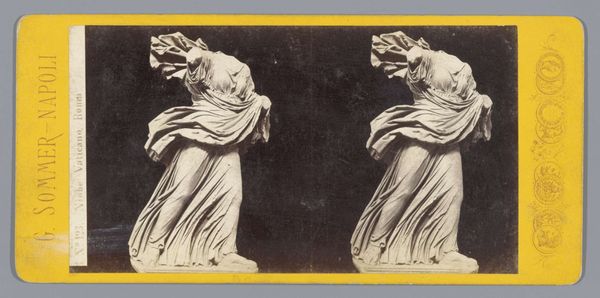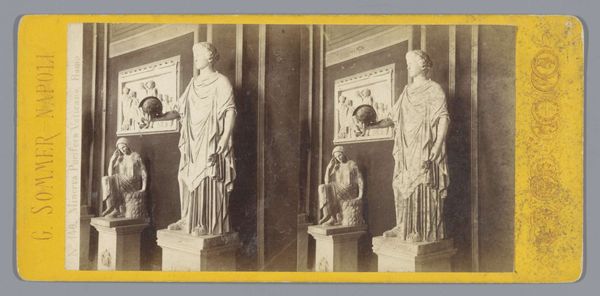
photography, sculpture
#
portrait
#
sculpture
#
greek-and-roman-art
#
photography
#
sculpture
Dimensions: height 83 mm, width 177 mm
Copyright: Rijks Museum: Open Domain
Curator: Immediately, I'm drawn to the classical elegance, almost cold but beautiful in its austerity. It looks like a plaster cast photographed against a stark background. Editor: Yes, let’s dive in. Here we have “Sculptuur van Juno in de Vaticaanse Musea,” a photograph dating roughly from 1860 to 1880, captured by Giorgio Sommer. It's currently held at the Rijksmuseum, offering us a look into the world of 19th-century photography and its engagement with classical sculpture. It's interesting, how photographic reproduction impacted art appreciation. Curator: Absolutely, considering this period we might question Sommer's access, the resources used for this composition. Was this commissioned, or more speculative commercial work, reproducing sculpture for the growing tourist market in Rome? Editor: That's an astute point. This piece likely served the burgeoning tourism industry, offering a portable, reproducible “high art” experience. Think about who had access to the Vatican Museums then. The photograph democratized access in a way, but also participated in a certain visual culture, fetishizing Western classical aesthetics for primarily European consumers. How does its mass production intersect with, or maybe flatten, the legacy and meaning embedded in a singular work of ancient art? Curator: We're seeing a new phase in how artworks disseminate information and become commodity at the same time. Now anyone could purchase Juno. This photographic medium, with its inherent reproducibility, challenges established ideas about originality and artistic aura, it allows broader distribution and reshapes the artistic consumption models. Editor: Exactly! It invites discussions about cultural appropriation, accessibility, and the transformation of artwork into consumer goods and mementos, also highlighting the intersection of art, tourism, and economic systems during this time. Who benefitted the most from this mass consumption of ancient ideals of beauty and power? Curator: It also poses crucial questions about labor—who actually created these images? What was the darkroom staff like, and the sales staff? Did they have a relationship with the artwork displayed in the picture? It forces us to shift our perspective from the artwork itself to the complex web of social, economic, and material conditions that shaped its existence as an object of mass consumption. Editor: Looking at the way its image can still spark discourse about appropriation, authenticity, and how images affect how culture shifts, helps reveal that this work, as an important historical artifact, holds much greater significance now. Curator: Well said, I've shifted my understanding of the picture based on our discussion. Editor: Likewise!
Comments
No comments
Be the first to comment and join the conversation on the ultimate creative platform.
